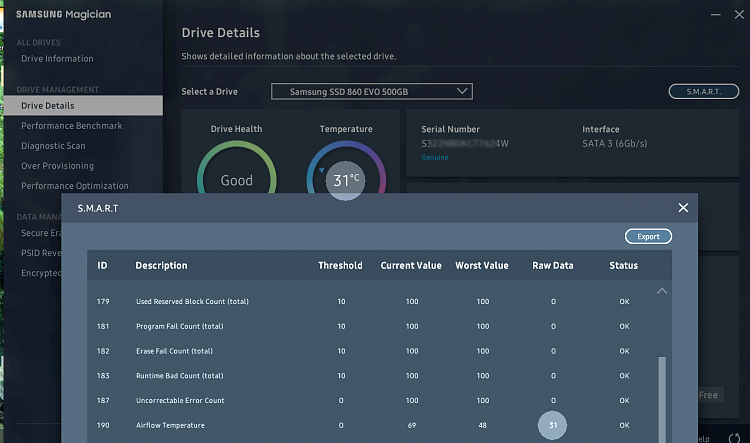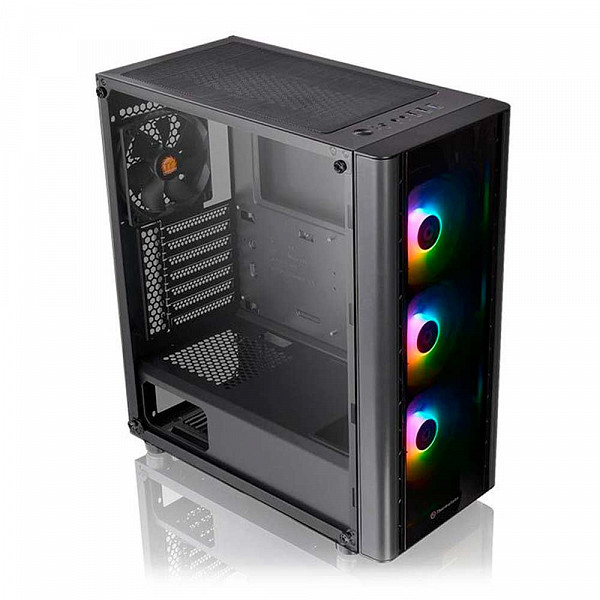
- #Ssd temp monitor how to#
- #Ssd temp monitor install#
- #Ssd temp monitor driver#
- #Ssd temp monitor upgrade#
- #Ssd temp monitor full#
Thermal Management T2 Total Time : 0 Checking NVME SSD temperature with smartmontools $ sudo nvme smart-log /dev/nvme0n1Īnd its output Smart Log for NVME device:nvme0 namespace-id:ffffffff and so on depends how many drive you have in your system. To see more info about your drive (your NVME SSD name usually nvme0, nvme1, …. This is the output on my laptop Node SN Model Namespace Usage Format FW Rev To list all nvme in your Desktop or Laptop $ sudo nvme list
#Ssd temp monitor install#
To install nvme-cli on Fedora $ sudo dnf install nvme-cli To install nvme-cli on Ubuntu distributions $ sudo apt install nvme-cli It supports several Linux distributions, check out their github for more info. Nvme-cli is a new greate tool to see more information about your NVME SSD. Checking NVME SSD temperature with nvme-cli Both vnme-cli and smartmontools give me similar results but much lower than CrystalDiskInfo in Windows 10. After finishing installing Kubuntu, I want to check again the new NVME SSD temperature in Kubuntu, to do so I installed nvme-cli and smartmontools to check NVME SSD temerature in Kubuntu. I didn’t take any screenshot but CrystalDiskInfo gave me the Samsung PM981’s temperature was around 50’c which is quite high while the laptop was idle. So before I installed Kubuntu 18.04 LTS, I downloaded CrystalDiskInfo to check all details about the Samsung PM981 NVME SSD I upgraded.

The laptop I bought came with Windows 10 preinstalled. At the time I didn’t know which NVME SSD is “okay” to purchase, after quite some days I decided to go with Samsung PM981 NVME SSD (the actual model number will be shown below).
#Ssd temp monitor upgrade#
Anyway I still want to upgrade my SSD to a larger and faster one.
#Ssd temp monitor full#
Unfortunately Dell Latitude E7470’s M.2 only support up to PCIe x2, not full 4 lanes PCIe x4. After doing some research, I found out Dell Latitude E7470 does support both SATA 3.0 & PCIe interfaces via M.2 connector. The Sk hynix SC300 via SATA interface has read speed around 510 MB/s and write speed around 380 MB/s (SATA 3.0 interface speed is around 600MB/s which with overhead likely what your get in real life is around 550MB/s).
#Ssd temp monitor how to#
How to install the NVIDIA drivers on Ubuntu 18.Recently I bought a Dell Latitude E7470 for all of the Linux testing, it came with the SK hynix SC300 M.2 2280 256GB SSD.How to Install Adobe Acrobat Reader on Ubuntu 20.04 Focal Fossa Linux.Set Kali root password and enable root login.How to change from default to alternative Python version on Debian Linux.Netplan static IP on Ubuntu configuration.How to enable/disable firewall on Ubuntu 18.04 Bionic Beaver Linux.How to install Tweak Tool on Ubuntu 20.04 LTS Focal Fossa Linux.Linux IP forwarding – How to Disable/Enable.How to use bash array in a shell script.
#Ssd temp monitor driver#
AMD Radeon Ubuntu 20.04 Driver Installation.How to install missing ifconfig command on Debian Linux.Ubuntu 20.04 Remote Desktop Access from Windows 10.


How to get HDD temperature in Linux Software Requirements and Linux Command Line Conventions Category


 0 kommentar(er)
0 kommentar(er)
